Key Takeaways
- An estimated 40% of Tennesseans ages 25+ had at least an associate’s degree in 2023, and 32% had a bachelor’s or more—both higher than past years but lower than national rates.
- Some differences in post-secondary education rates among white, black, and Hispanic Tennesseans are shrinking, but significant gaps remain.
- Between 2010 and 2023, median earnings grew for Tennesseans with a high school diploma and those with bachelor’s degrees, while the others remained unchanged.
The U.S. Census Bureau released new data in September 2024 on income, poverty, education, and health insurance coverage in 2023. These metrics paint a picture of the social and economic circumstances across the United States. Here’s what stands out from the estimates of Tennesseans’ education levels in 2023.[1]
Education Levels in Tennessee
Tennessee continued its recent upward trend in the share of residents with post-secondary degrees, though rates remain lower than national ones. Most Tennesseans have attended at least some college (Figure 1), but most do not have a post-secondary degree (Figure 2). An estimated 39.7% of Tennesseans 25+ had at least an associate’s degree in 2023, and 31.7% had a bachelor’s degree or higher. Both metrics have risen in recent years (Figure 3). (1) Meanwhile, state policymakers have also sought to increase the number of Tennesseans with technical degrees and certifications. However, the American Community Survey does not collect information on those credentials.
Figure 1
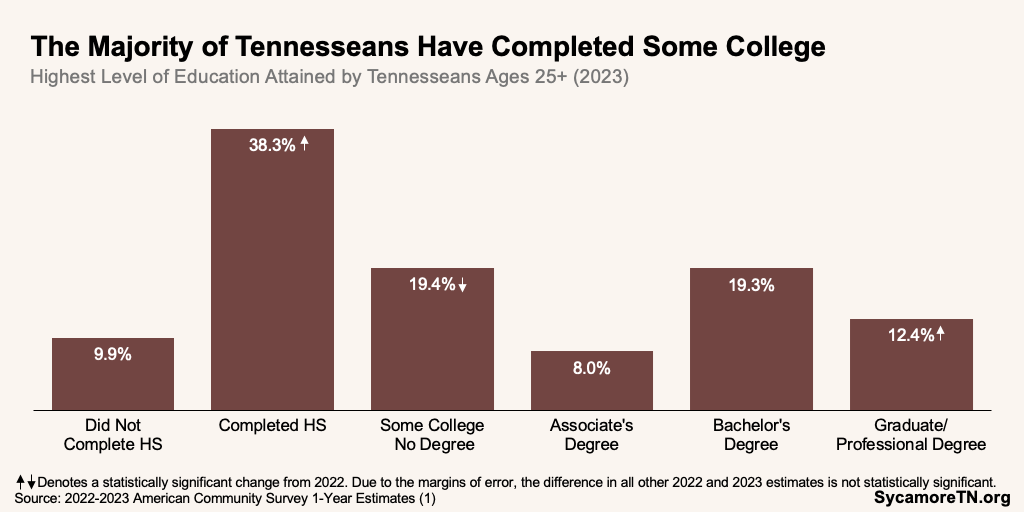
Figure 2
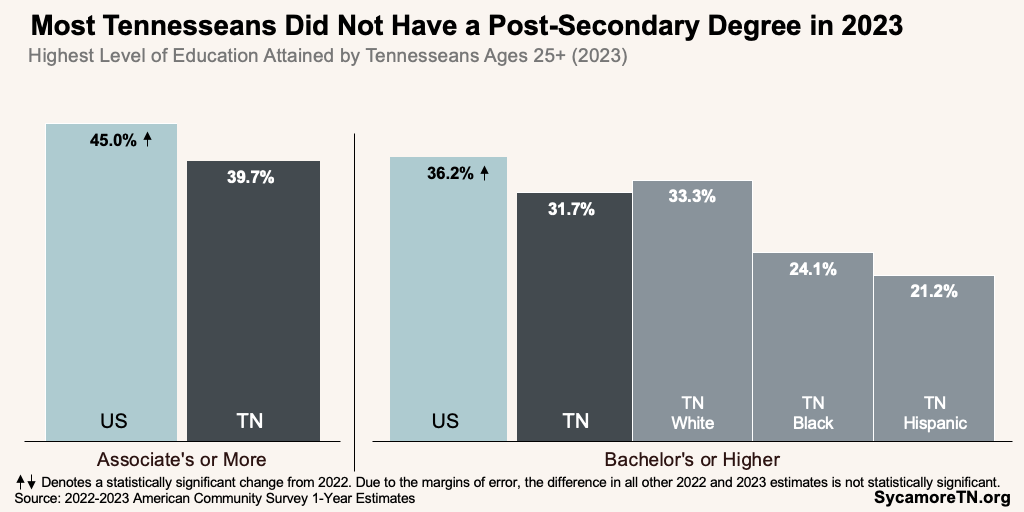
Figure 3
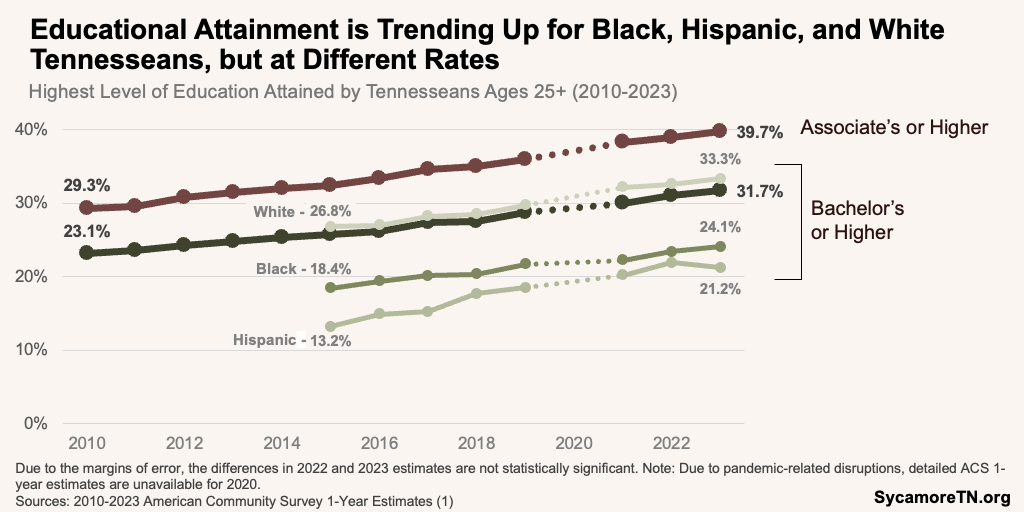
Demographic and Geographic Variation
Some differences in post-secondary education rates by race and ethnicity are shrinking, but significant gaps remain (Figure 3). (1) From 2015 to 2023, the share of Tennesseans with at least a bachelor’s degree increased the most among Hispanics (up 8.0 percentage points), followed by white residents (up 6.5 points), and then black residents (up 5.7 points). Despite this progress, 21.2% of Hispanics and 24.1% of black Tennesseans had a bachelor’s or higher, compared to 33.3% of white residents.
Rates of post-secondary education in Tennessee also vary by geography. The Census Bureau’s September data release also includes 2023 estimates for counties with populations above 65,000. Among the 21 Tennessee counties with available data:
- Associate’s Degree or More — The share of adults 25 and older with at least an associate’s degree ranged from 26.7% in Greene County to 68.7% in Williamson County (Figure 4). Due to the margins of error, the differences in the 2022 and 2023 estimates are not statistically significant. (1)
- Bachelor’s Degree or More — Residents with bachelor’s degrees or more varied from 16.5% in Greene County to 62.5% in Williamson County (Figure 5). One county saw a statistically significant decline—Washington. Due to the margins of error, the differences in other 2022 and 2023 estimates are not statistically significant. (1)
See Table A1 in the Appendix for complete 2022-2023 county data.
Figure 4
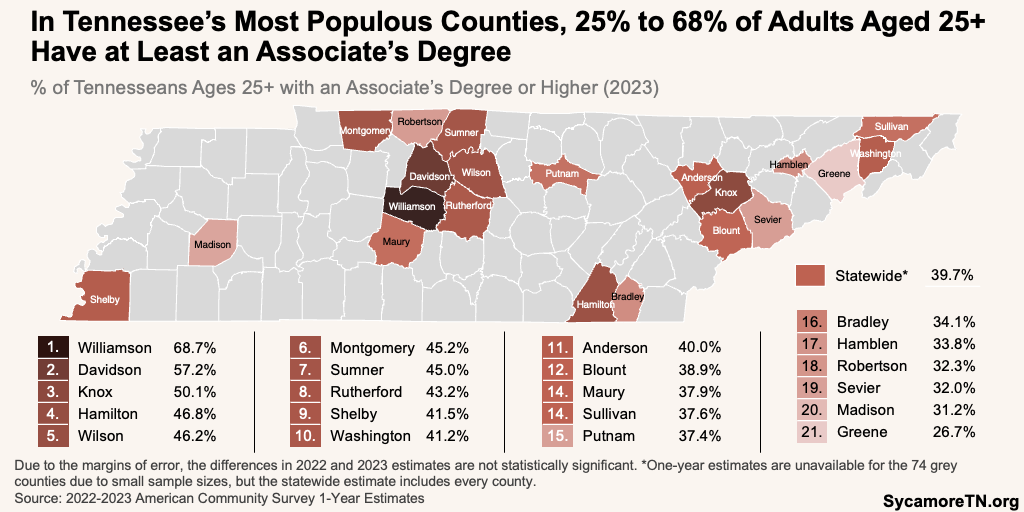
Figure 5
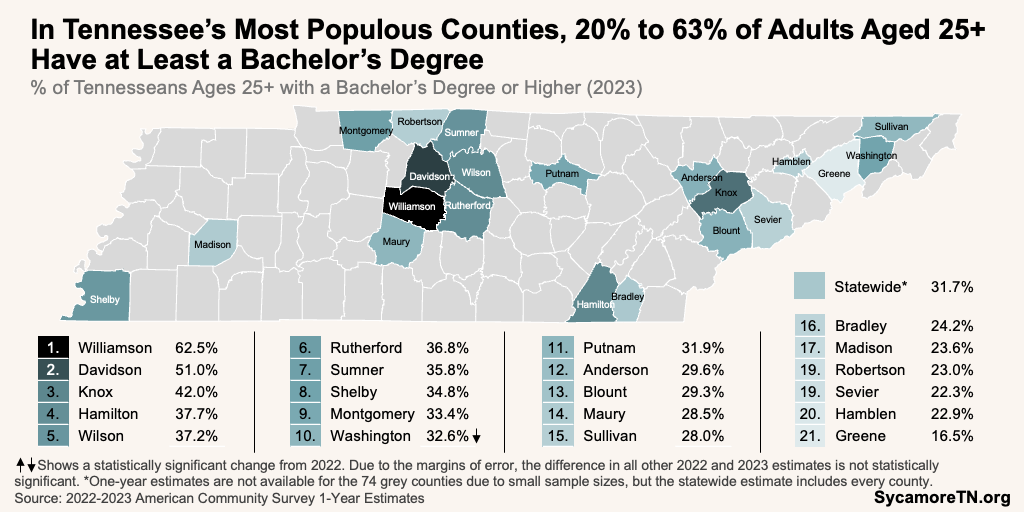
Education and Earnings in Tennessee
Higher education levels continue to be associated with higher earnings in Tennessee (Figure 6). In 2023, for example, Tennesseans with a bachelor’s degree had median earnings of about $57,500. In other words, half of the people in that group made more, and half earned less. For comparison, median earnings were 28% lower for Tennesseans with only some college or an associate’s degree—about $42,000.
Since 2010, median earnings grew for Tennesseans with a high school diploma and those with bachelor’s degrees, while the others remained unchanged (Figure 6). (1) (2) After adjusting for inflation, the earnings for those with a high school diploma increased 11% from 2010 to 2023, while earnings were up 4% for those with a bachelor’s degree. The difference between 2023 and 2010 earnings for those with some college or an associate’s degree and those with a graduate degree was not statistically significant.
Figure 6
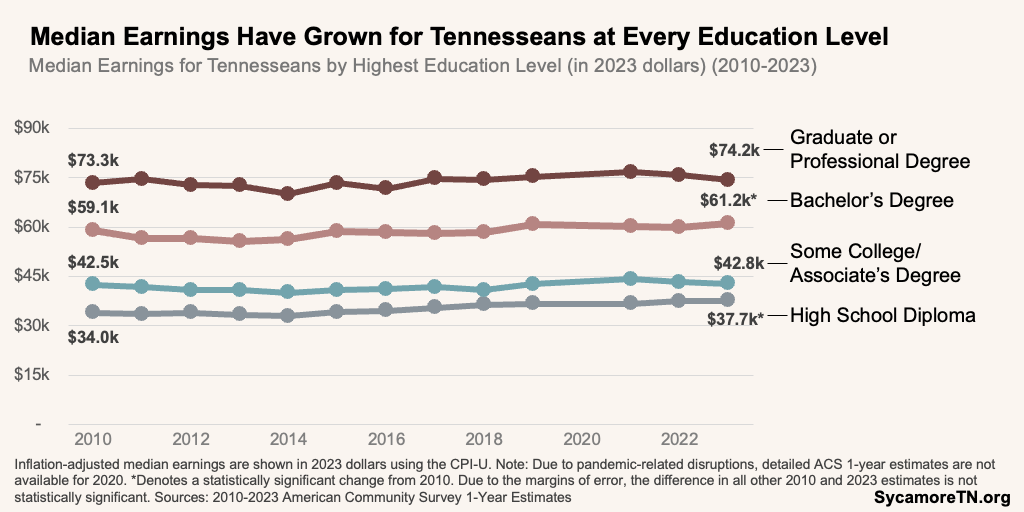
References
Click to Open/Close
References
- U.S. Census Bureau. 2010-2023 American Community Survey 1-Year Estimates. [Online] September 2024. Available via http://data.census.gov.
- Some data are also available from KIDS COUNT Data Center via https://datacenter.aecf.org/.
- U.S. Bureau of Labor Statistics. Consumer Price Index: CPI-U. [Online] Accessed from https://www.bls.gov/.
[1]Due to the margins of error, the difference in some 2022 and 2023 estimates is not statistically significant. The Census Bureau’s American Community Survey generates estimates based on a sample of the total population. The margin of error measures the likely range of the true value if every person were surveyed. When the error margins for two values overlap, the difference may simply be due to sampling or estimation issues. To learn more about the importance of samples, read our tips for interpreting statistics.

